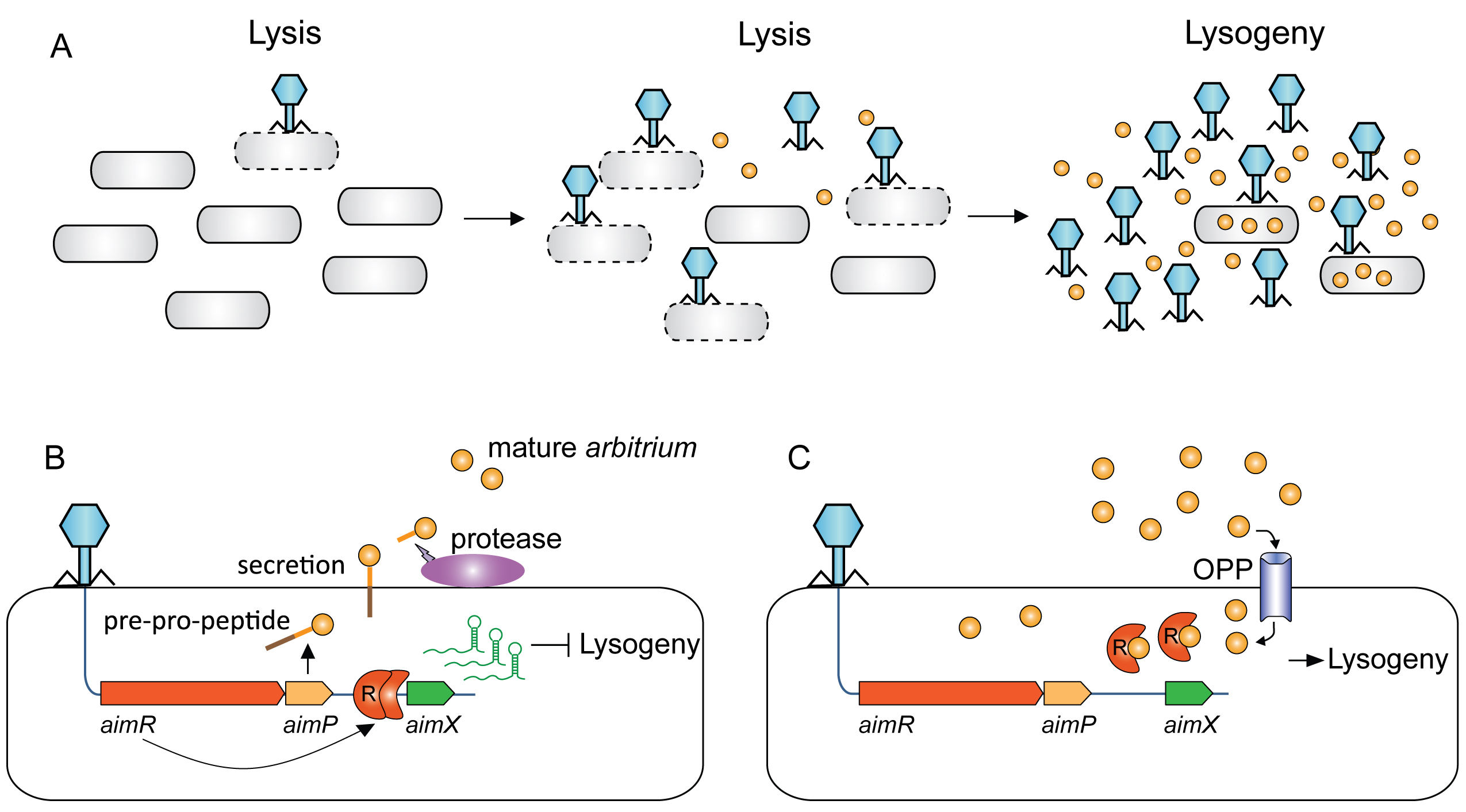Communication between viruses
We discovered that phages that infect Bacillus subtilis can use small molecule communication to coordinate lysis/lysogeny decisions (Erez et al, Nature 2017). During infection of its host cell, the phage produces a 6aa communication peptide that is released to the medium. In subsequent infections, progeny phages measure the concentration of this peptide and lysogenize if the concentration is sufficiently high. We found that different phages encode different versions of the communication peptide, demonstrating a phage-specific peptide communication code for lysogeny decisions. We termed this communication system the "arbitrium" system (Erez et al, Nature 2017). We found that such communication commonly guides lysogeny decisions in more than 1000 phages that infect soil bacteria, as well as those infecting pathogens (Stokar-Avihail, Tal et al, Cell Host & Microbe 2019).

